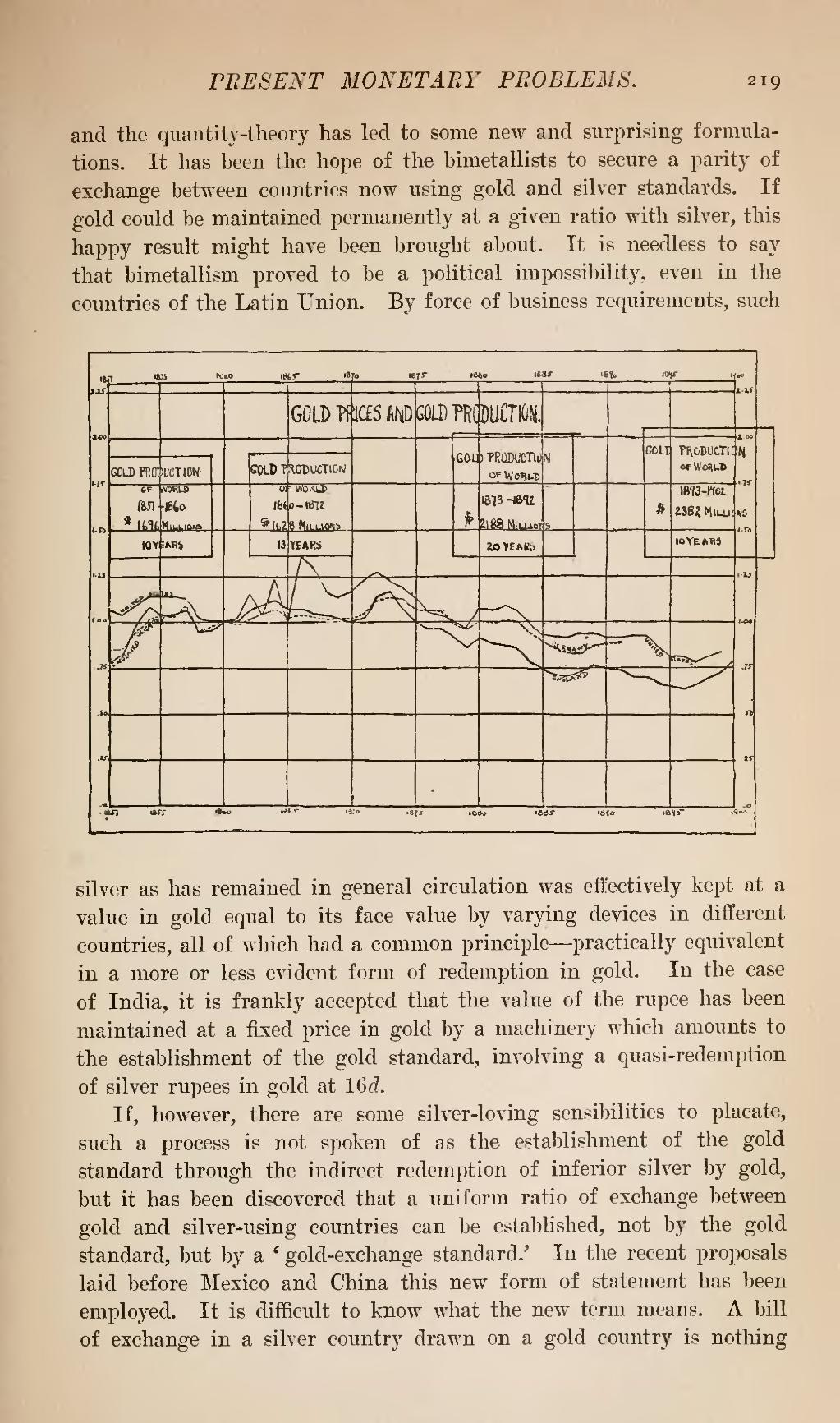and the quantity-theory has led to some new and surprising formulations. It has been the hope of the bimetallists to secure a parity of exchange between countries now using gold and silver standards. If gold could be maintained permanently at a given ratio with silver, this happy result might have been brought about. It is needless to say that bimetallism proved to be a political impossibility, even in the countries of the Latin Union. By force of business requirements, such
silver as has remained in general circulation was effectively kept at a value in gold equal to its face value by varying devices in different countries, all of which had a common principle—practically equivalent in a more or less evident form of redemption in gold. In the case of India, it is frankly accepted that the value of the rupee has been maintained at a fixed price in gold by a machinery which amounts to the establishment of the gold standard, involving a quasi-redemption of silver rupees in gold at 16d.
If, however, there are some silver-loving sensibilities to placate, such a process is not spoken of as the establishment of the gold standard through the indirect redemption of inferior silver by gold, but it has been discovered that a uniform ratio of exchange between gold and silver-using countries can be established, not by the gold standard, but by a 'gold-exchange standard.' In the recent proposals laid before Mexico and China this new form of statement has been employed. It is difficult to know what the new term means. A bill of exchange in a silver country drawn on a gold country is nothing


